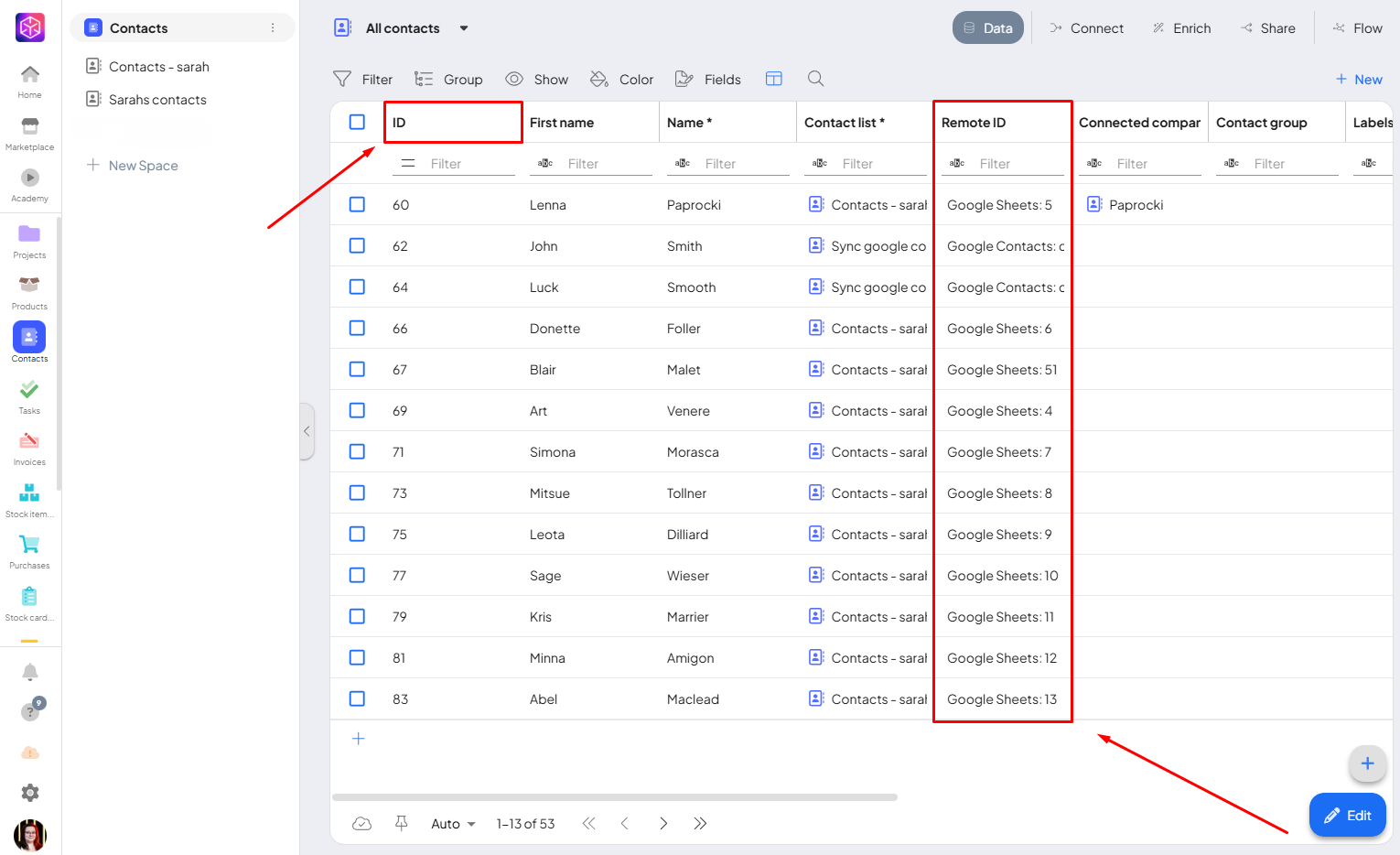Leveraging Remote IDs for Data Synchronization in Boost.space
Remote ID is a table in the database for pairing third party records with Boost.space records where one Boost.space record can have several remote ids of external instruments.
Remote IDs are good to use both when synchronizing data and when working with third party applications. With the help of remote IDs you can easily query specific records.
Remote IDs in Integrator
Remote IDs consist of two fields – Remote ID and Remote Application.
In the “Remote ID” you map the real ID of the external device and in the “Remote Application” you write the name of the external application you are working with. This Remote application is especially useful if you are going to synchronize more tools to avoid duplicate entries of remote IDs.
The Boost.space modules, usually “Synchronize remote record“, “Create record” and “Update record“, already have inputs to which this can be written.

On the output when getting the log data, the Remote ID structure looks just like an arrayWithin a bundle, data items of the same type are sometimes in an array. You can find an array by looking at the details of a bundle. Depending on the details of your scenario, you can map other modules to a specific item in an array or use iterators and aggregators to manipulate your data into other formats. When mapping,... with objects of individual Remote IDs.

Remote IDs in Boost.space system
When you open the module in your system, you will see the Remote ID assigned to the record, along with the newly generated ID.

Using Remote IDs in Boost.space provides a efficient way to keep your data synchronized across multiple external systems. By correctly mappingMapping links the modules in your scenario. When you map an item, you connected the data retrieved by one module to another module to perform the desired action. For example, you can map the email address and subject lines from the Email > Watch emails module to Google Sheets > Add a row and create a spreadsheet of email addresses... Remote IDs and Remote Applications, you can prevent duplication, maintain data integrity, and streamline integrations between Boost.space and third-party tools.
If you encounter any problems during the process, please do not hesitate to contact us at [email protected].